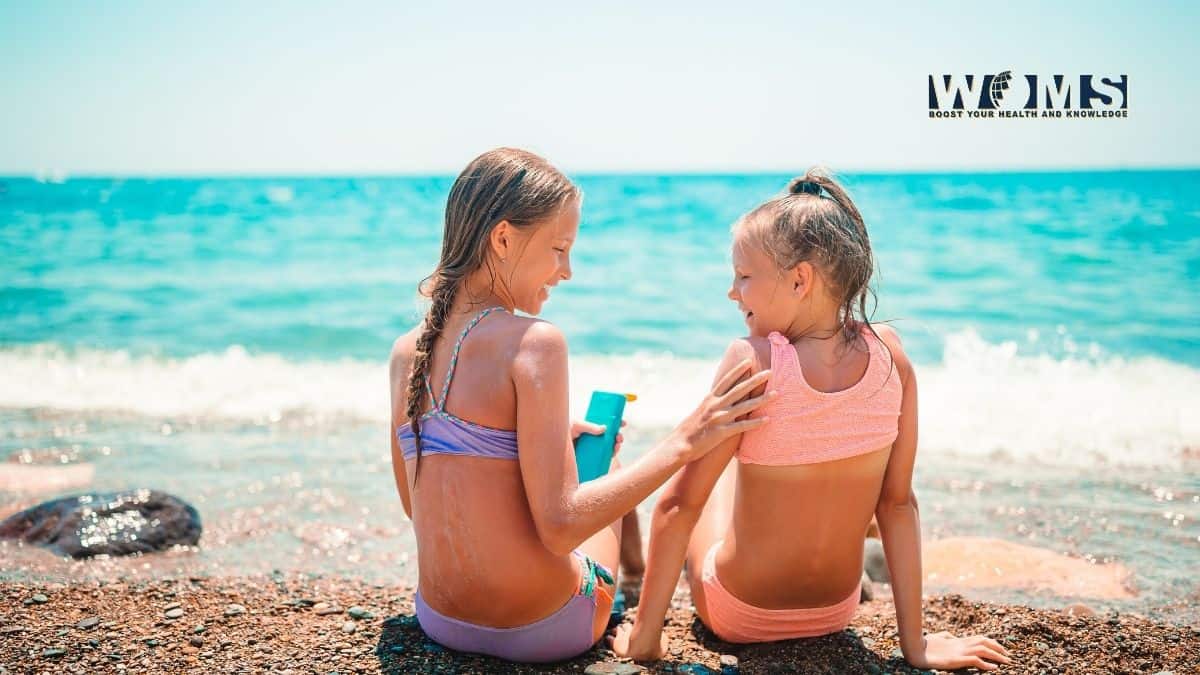Sunscreen and swimming! Everything you need to know

Who doesn’t love swimming on a hot day? It’s the perfect way to relax, unwind and cool off at the same time but did you know swimming can make you more prone to sunburn? UV rays reflect off the water and bounce back at you, they can penetrate through the water and burn you, as well as the water itself washing off your sunscreen. To ensure you and your family are protected from the sun, we’ve compiled a list of everything you should look for in a sunscreen that’s suitable for swimming.
Water-resistant
If you are going swimming, you should be using water-resistant sunscreen every time. Water-resistant sunscreen adheres to the skin better than regular sunscreen, and it minimizes the likelihood of it washing or sweating off when it comes into contact with liquid. For a sunscreen to be deemed water-resistant, it must be able to maintain its SPF protection after being submerged in water for a certain period. Different water-resistant sunscreens offer different periods of protection, however, regardless of whether the sunscreen is water-resistant for 2 or 4 hours, it should be reapplied every 1 to 2 hours at the minimum to ensure you are always protected from the sun’s harmful UV rays.
Is choosing a water-resistant sunscreen over a normal sunscreen that important?
If you are swimming or going to be sweating a lot, yes it is! If you have a swimming pool in the backyard, you’ll likely be using it often when the weather is warm. Getting burnt can be extremely painful and it can put your swimming on hold until your skin recovers. More importantly, been burnt increases your risk of getting skin cancer which can be fatal. Melanoma is the deadliest type of skin cancer and is primarily caused by UV radiation. The Cancer Council claims that more than 80% of cancers diagnosed in Australia each year are skin cancer. Sun protection continues to be a prevalent issue.
Understandably, it’s easy to get caught up in the fun of swimming and forgot to reapply your sunscreen on schedule. If this happens, it doesn’t take long for the harsh Aussie sun to burn the skin. To prevent this from occurring we suggest that you put a timer on your phone to remind you to slip, slop, slap. This also gives everyone a chance to sit in the shade for a while and rehydrate before jumping back in the water. Yes, it can be a hassle, but it’s better than the alternative – nursing painful sunburn and increasing your risk of skin cancer.
What to look for in a swimming suitable sunscreen
The level of protection it offers
If you’ve ever bought sunscreen before, you’d know how many different options and brands there are to choose from. One thing to remember is that not all sunscreens are equal. To ensure you are getting optimal coverage when swimming, you should look for a broad-spectrum sunscreen with a high SPF rating of 30 or more.
What’s the difference between broad-spectrum and SPF?
Broad-spectrum – Protects from both harmful UVA and UVB radiation. UVA rays are aging rays, and UVB are burning rays.
SPF 30 or 50 – This is the percentage of UV rays that are filtered out. For example, a sunscreen with an SPF 30 rating would filter out around 97% of ultraviolet radiation.
Check the expiry
It’s easy to assume that the bottle of sunscreen you bought last summer should still be fine, however, they do come with expiry dates and if your sunscreen is out of date, it is not going to offer you the same sun protection benefits. It is also important that you factor in the storage of your sunscreen as this can affect its longevity. Don’t keep it in the car or in the sun, as heat can destroy the active ingredients.
Are some brands better than others?
It is not necessarily the brand you should be looking at but rather the protection it is going to provide while swimming.
We’ve covered what to look for in sunscreen, here’s what else you need to know
Apply your sunscreen generously
Don’t skimp when applying your sunscreen, apply a generous amount to all exposed parts of the body ensuring that you don’t forget areas such as behind the ears, hands, and neck. Just remember, there’s no harm in overapplying, but there is from underapplying.
Wait 20 minutes after applying your sunscreen before jumping in the water
Jumping straight into the water after applying sunscreen will see most of it wash off and it will offer limited protection. For optimal protection, rub sunscreen into clean, dry skin and wait 20 minutes. This will give the sunscreen a chance to soak into the skin which enables it to provide proper protection.
Consider different types of sun protection
Sunscreen is fantastic for protecting your body, but what about your lips? You can purchase SPF 30 lip balms that are barely noticeable and can be worn to protect your lips from getting burnt while swimming. Alternatively, you could grab a zinc stick from your local pharmacy. They provide optimal sun protection and are great to use on your lips and over the bridge of your nose. They penetrate deeply into the skin and offer great performance in the water. They come in bright fluorescent colors right down to invisible versions. If you don’t like the feel of thick sunscreen on your face, you can buy sunscreens specifically designed to wear on the face. They are lightweight and non-greasy while still providing great SPF protection.
Follow the five S’s of sun safety
Sunscreen shouldn’t be the only method of sun protection you are using while outdoors. Follow the 5 S’s of sun safety. Ensure you are wearing a wide-brimmed hat, quality sunglasses, a t-shirt, or a rash shirt, and seek shade as often as you can.
Now that you’re equipped with all the information you need to know about purchasing and applying the correct sunscreen, all that’s left to do is jump in the pool! Don’t have a pool? Contact our highly skilled team of pool professionals here at Barrier Reef Pools Perth, we specialize in luxurious small swimming pools and spas and have options to suit every home and budget.




